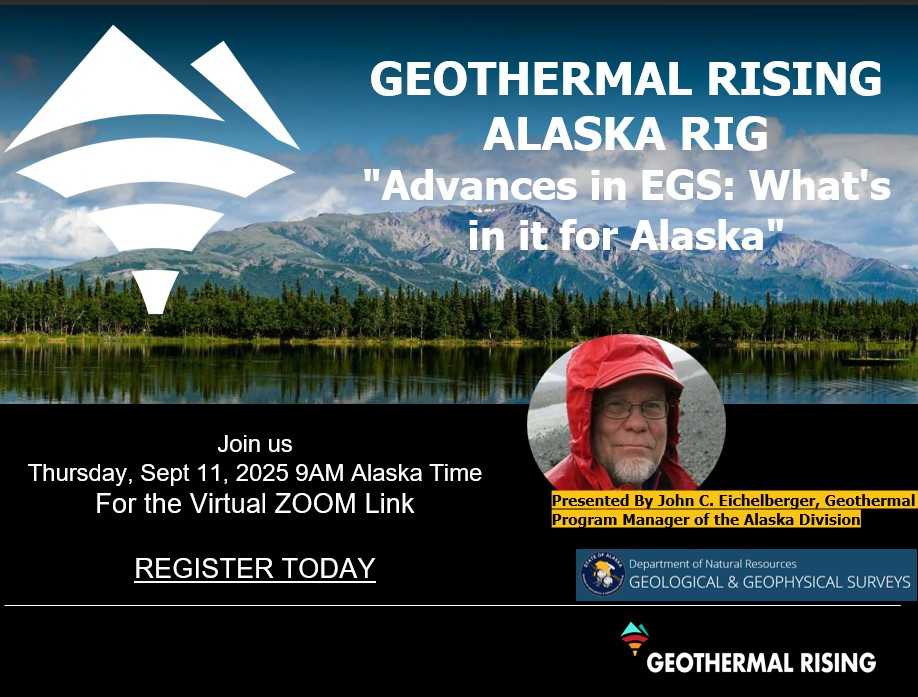2025 Alaska RIG presents "Advances in EGS: What's in it for Alaska"
Hot Dry Rock (HDR) geothermal technology began at Los Alamos National Laboratory in the 1970s, aiming to create artificial geothermal reservoirs—now called Enhanced Geothermal Systems (EGS)—where natural ones didn’t exist. The concept proved that circulating water through fractures in hot granite could generate energy, but drilling costs outweighed returns at the time. Advances in drilling and fracturing from the oil and gas industry may now make EGS viable, with promising projects underway in Utah. If successful, this could open vast geothermal potential in Alaska, especially in magma-rich regions, though key performance questions remain.

Hot Dry Rock (HDR) was born at Los Alamos National Laboratories (LANL), Los Alamos, New Mexico in the 70s. Succeed would have greatly expanded opportunities for geothermal energy through development of artificial geothermal reservoirs [now called Enhanced or Engineered Geothermal Systems (EGS)] where natural ones did not exist. I was very lucky to witness its early days as a volcanologist – essentially the study of very hot rock – in my first job there after graduate school. The project invented and proved the concept of circulating water through artificial fractures in hot granite between two boreholes to extract energy. The site is on the rim of Valles Caldera, one of three giant Late Pleistocene Calderas in the United States. A great deal was learned about the mechanics of fracturing rock, about being able to map fracturing in 4D with seismic arrays, and about directional drilling. But the drilling cost more than the energy was worth. Meanwhile, the oil and gas industry, aided by developments in the DOE laboratories, greatly advanced both drilling technology and hydraulic fracturing (“fracking”), to the extent that the US became a net exporter of natural gas. Could Enhanced Geothermal Systems (EGS), the reincarnation of HDR, now succeed where its predecessor failed? After years of preparation by two exciting projects in the Mineral Mountains of Utah, we will soon learn the answer. According to all the news reports, the answer is a big yes, but we do not know how fast the thermal output will decline or how much water will leak away. Meanwhile, most geothermalists have forgotten what was obvious at Los Alamos and should be obvious in the Mineral Mountains: that the heat is coming from nearby magma. If the most optimistic of claims for EGS are fulfilled, much of Alaska will be fair game. If not, Alaska still has great geothermal potential because we have a lot of magma (some assembly required). The jury is still out, but geothermal in Alaska should have a bright future.
